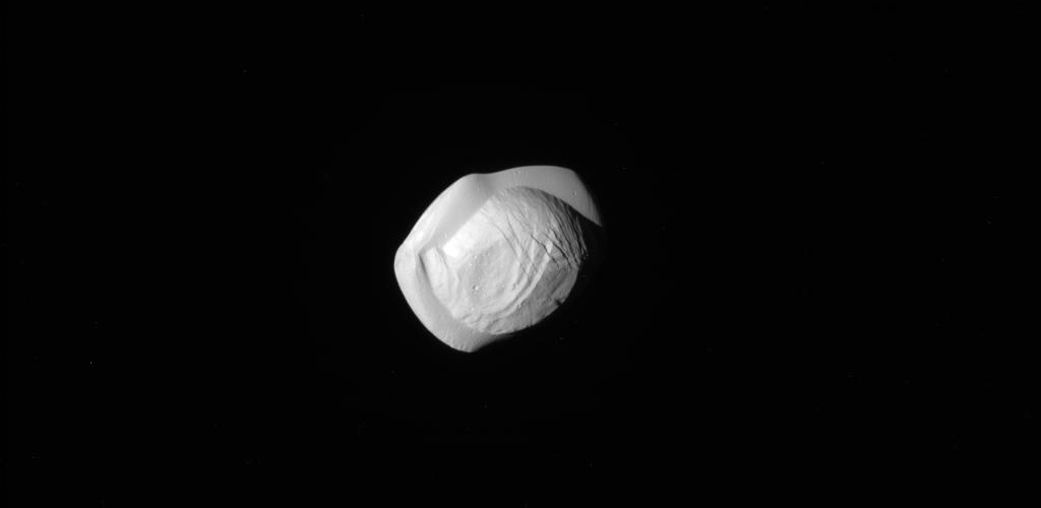One of Saturn’s Moons is Making Astronomers Hungry
New images of the tiny moon are drawing comparisons to a ravioli, empanadas, walnuts, hamburgers…nom, nom, nom
/https://tf-cmsv2-smithsonianmag-media.s3.amazonaws.com/filer/29/25/2925a43d-e90d-427c-b33d-1014562211c4/pan_2.jpg)
NASA’s Cassini spacecraft has been buzzing around Saturn and its many, many moons for the last 13 years, sending back the first close-up images of the geologically active Enceladus, Saturn’s hexagonal storm, and Mimas, a moon that looks like the Death Star. Its latest find, however, is not nearly so menacing—earlier this week Cassini sent back the best images yet of Saturn’s moon Pan, a tiny 21-mile wide body hiding in the planet's A ring, reports Nadia Drake at National Geographic.
The most striking thing about Pan is its unusual shape. As moons go, Pan is downright cute, with an oval-shaped main body surrounded by an equatorial ridge. The moon has been described by astronomers and journalists as a ravioli moon, a space empanada, a walnut, and a pierogi. Loren Grush at The Verge reports that the staff at the website likened the moon to half an avocado, a belly button, fresh naan bread, Gilligan’s hat, a space pimple and a hamburger tilted to 80 degrees.
While studying the moon may make some researchers a bit peckish, Mark Showalter, a senior research scientist at the SETI Institute who, along with a colleague, originally discovered the moon back in 1990 by examining data from the Voyager 2 mission, finds the images fascinating. “This is such a far cry from the nondescript ‘dots’ that I was tracking way back in 1990 in the Voyager images!” he tells Drake. “It’s very gratifying finally to see Pan’s closeup.”
So why does the little moon have such an unusual, delectable, shape? Stephanie Pappas at LiveScience explains that the moon is known as a “shepherd” because as it orbits Saturn within the planet's iconic rings, its gravity sweeps an area inside the ring free of dusty particles. Pan’s gravity holds open a 200-mile-wide opening in Saturn’s A ring known as the Encke Gap. Showalter tells Drake that it’s likely that some of that the fine dust sticks to Pan, and since the ring is much thinner than the moon, it has accrued in an “equatorial accretion disk” or ring around Pan's middle.
Pan is not the only moon that might go well with a little marinara. Saturn’s moon Atlas, which orbits in the outer edge of the A ring, also has a saucer shape. Cassini got some passing images of Atlas in 2015, but it’s unlikely the space probe will have time to do a more in-depth photo shoot with that moon before the probe’s final mission: crashing into the surface of Saturn in September, 2017.
